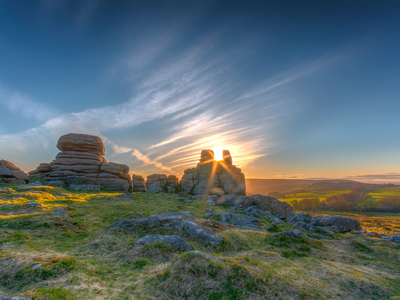
Rock Types and the Landscape
Different rocks create contrasting landforms and landscapes. Some of the most common rocks in Britain are granite, chalk, clay and Carboniferous limestone. For the GCSE, you will have made some case studies of several areas, each with a different geology, to learn about the features associated with these types of rock. You will also have studied how we use these areas, but this quiz is only concerned with helping you to revise about the landforms and how they are linked to the properties of the underlying rocks.
Granite is an igneous rock that underlies a lot of highland Scotland and the south-west peninsula of England (Devon and Cornwall). Dartmoor is a good example of a typical granite landscape. Exposures of granite are the tops of batholiths and this usually produces flat-topped moorland areas.
Ready for more?
not all...
quizzers. Try to win a coveted spot on our Hall of Fame Page.







